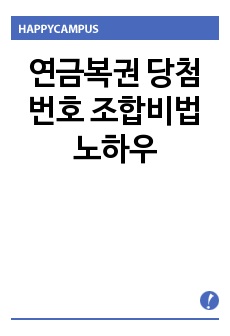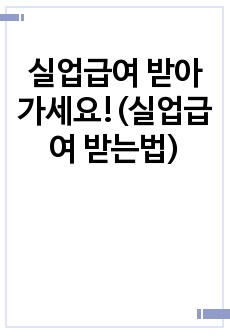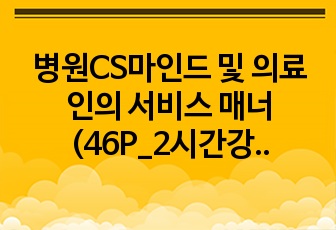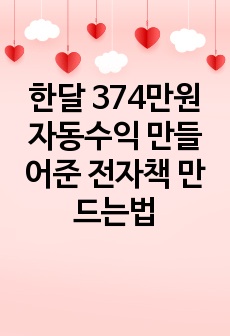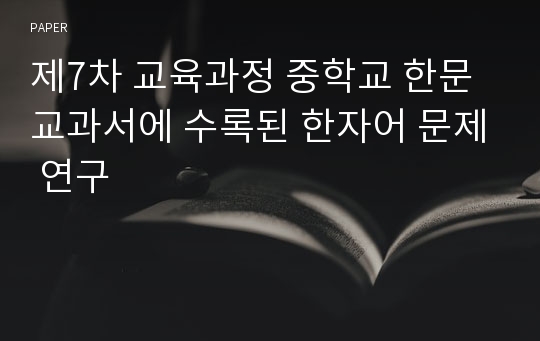제7차 교육과정 중학교 한문교과서에 수록된 한자어 문제 연구
* 본 문서는 배포용으로 복사 및 편집이 불가합니다.
서지정보
ㆍ발행기관 : 한국한자한문교육학회
ㆍ수록지정보 : 漢字漢文敎育 / 14권
ㆍ저자명 : 李東宰
ㆍ저자명 : 李東宰
목차
Ⅰ. 서론Ⅱ. 한자어 짜임의 문제
Ⅲ. 한자어 내용의 문제
Ⅳ. 同音異議語의 문제
Ⅴ. 결론
※. 참고문헌
한국어 초록
이 논문은「제 7차 교육과정 중학교 한문교과서의 교육용 기초 한자 900자의 ‘의미’ 통일 방안」의 후속 연구로서, 제7차 교육과정에 따라 출간된 중학교 한문교과서에 수록된 한자어의 문제점을 살펴보아, 앞으로 시행될 제8차 교육과정의 한문교과서를 집필하는데 일조를 하는 것이 목적이다. 본고는 한문 교과서에 수록되어 있는 한자어의 문제점을, 첫째, ‘한자어 짜임의 문제’, 둘째, ‘한자어의 내용 문제’, 셋째, ‘同音異義語문제’로 나누어 살펴보았으며, 그 결론은 아래와 같다. 첫째, ‘한자어 짜임의 문제’는 ‘명칭과 분류 문제’와 ‘특이한 한자어의 짜임의 문제’로 나누어 살펴보았다. 먼저, ‘명칭의 문제’는 8종의 교과서 가운데 중앙교육은 명칭을 부여하지 않았으며, 분류에 있어서는 8종의 교과서가 ‘술목관계’, ‘술보관계’, ‘수식관계’에 대해서는 큰 이견이 없었다. 다만 ‘주술관계’는 7종의 교과서는 이견이 없지만, 청색출판사가 ‘주술관계’를 한자어의 짜임으로 설정하지 않고 ‘문장의 구조’로 파악했다. 또한, ‘병렬관계’ 가운데 ‘유사관계’는 8종의 교과서가 이견이 없고, ‘대립관계’와 ‘대등관계’를 나누거나 묶어서 분류하는데, 서로 다른 이견이 있었다. 이는 한자어를 도식적으로 이해하는데 기인한 것이며, 제8차 교육과정에 따라 집필될 교과서에서는 ‘한자어의 짜임’을 문맥에서 이해되도록 구성해야 한다. 다음으로, ‘특이한 한자어의 짜임 문제’이다. 8종의 교과서는 ‘自然保護’와 같이 우리말식으로 풀이되는 특이한 한자어를 제시하였으면서도, 일부 출판사는 설명이 없거나, 또는 ‘국어식 짜임’, ‘우리말식 짜임’이라고 설명하였다. 또한 ‘臥病’, ‘所願’, ‘所望’같이 정격에 어긋난 짜임에 대하여, 8종의 교과서가 그 ‘짜임’에 대해서는 설명이 없고, 단지 일부 출판사만 ‘臥病’에 대해서 ‘병들어 누움’이라고 뜻풀이를 보충하였을뿐이다. 둘째, ‘한자어의 내용문제’에 대하여 살펴보았다. 한문과 교육목표인 ‘언어생활에 활용하고 타교과 학습에 도움이 되며, 바람직한 인성’을 기르는데 부적합하여 검토가 필요한 한자어는 1학년 교과서에는 14어휘, 2학년 교과서에는 34어휘, 3학년 교과서에는 54어휘가 있다. 이들 어휘 가운데 부사어는 30어휘, 생경하거나 난해한 어휘는 55어휘로, 과연 ‘언어생활과 타교과 학습에 도움이 되는지?’ 검토가 필요하다. 또한 ‘殺人’과 같이 그 의미가 교과 내용으로 부적절한 한자어는 17어휘로써, 이에 대해 반드시 검토가 필요하다. 셋째, ‘同音異議語’의 문제를 살펴보았다. 同音異議語의 지도는 타교과가 넘볼 수 없는 한문과의 고유 영역으로, 제7차 교육과정에 따라 출간된 8종의 한문교과서에는 53어휘의 同音異議語가 수록되어 있다. 8종의 교과서 가운데 同音異議語에 대한 설명은 5개 출판사에 20어휘에 대한 설명이 있고, 3개 출판사는 다루지 않았다. 제7차 교육과정에 따라 출간된 한문교과서는 중학교 교육용 기초 한자 900자를 전부 수용해야 하는 제한에도 불구하고, 과거의 교육과정에 따라 간행된 교과서보다는 교과서의 체제, 내용 등에 비약적인 발전을 한 것은 사실이지만, ‘한자어의 짜임’의 ‘명칭과 분류’에 대한 통일과 ‘한자어의 내용’, ‘同音異議語’에 대한 지도 대책 등의 문제점을 가지고 있다. 앞으로 시행될 제8차 교육과정의 한문교과서를 집필할 때에는 이를 고려하여 집필하여야 한다.영어 초록
This paper aims at presenting a direction for Chinese textbook which will be written according to the 8th Curriculum after examining the problem of Chinese characters found in middle school Chinese writing textbooks published according to the 7th Curriculum, as the succeeding research which follows "the method of unifying 'the meaning' of elementary 900 Chinese characters in middle school Chinese writing textbooks published according to the 7th Educational Curriculum" read by me at academic conference having a theme of "Diagnosis and direction of Chinese character and Chinese writing education" which was held by the Korean Chinese Character and Chinese Writing Education Society. Though Chinese writing textbooks according to the 7th Curriculum approved by the Ministry of Education showed Chinese words diversely, some textbooks have a difference in the title and classification of 'the composition of Chinese words', that is, grammatical function for the make-up of Chinese words and inappropriate contents not to be compatible with Chinese subject educational aim which is helping language life, learning of other subjects and boosting the sound thinking and desirous human nature. This paper analyzed and divided the problem of Chinese characters found in Chinese writing textbook like a following order, first problem of the composition of Chinese words, then the problems of contents of Chinese words and finally the problem of homophony. The conclusion is like followings. First, the problem of the composition of Chinese words can be can be divided into the subcategories of the problem of title and classification and the problem of special make-up. Concerning the problem of title and classification, text book by Jungang Education among 8 textbooks didn't give a title and there is no objection to classification such as the relation between 'predicate and objective', the relation between predicate and complement and modification among eight textbooks. The relation between subjective and predicate, however, has no difference among seven textbooks but a textbook by Chungsaek Publishing Co consider it not at the viewpoint of 'make-up of Chinese words but at that of 'structure of sentence. Concerning the parallel relation, there is no difference about similarity relation but 'opposition relation' and 'equality relation' show difference in the classification such as division and binding. Then, the problem of make-up of special Chinese words is studied at the respect of Korean style composition and the composition beyond correct and regular Chinese words. With regard to 'Conservation of nature', which is Korean style composition, Pakyoung Sa explains nothing about it, but Kyohak Sa, Dongwha Sa, Minjung Seorim and Jihak Sa explain it as "Korean style composition" and Jungang Education, Cheongsaek and Taesung Publish Co. explain it as 'our language's composition'. Nine publishing companies explain nothing about composition, concerning the abnormal words such as 'lying in a sick bed(臥病)', 'one's desire(所願)' and 'desire(所望)' Second, I research 'the contents of Chinese words'. There are 54 Chinese words not satisfying Chinese subject educational aim helping language life and learning of other subjects and boosting the sound thinking and desirous human nature, which is needed to exam. Thirty one words among them is adverb. Fifty four crude and difficult words are needed to take a detailed examination to know if they could help language life and the learning of other subjects. Inappropriate words such as 'killing man' need to be modified because it has the contents which are not compatible with the contents of Chinese subject. Third, I analyzed homophony. The teaching of homophony is unique area other subjects can't look over. Eight Chinese textbooks published according to the 7th Curriculum have 53 words with homophony. About them, Kyohaksa explains five words, Dongwhasa five words, Jihaksa one word, Cheongsaek one word and Taesung eightwords, but Minjungseorim, Pakyoungsa, Jungang Education deal with nothing about them. It is true that Chinese textbooks published according to the 7th Curriculum have developed the formation and contents of textbook to a great extent, compared to those textbooks of old Curriculums. They, however, have problems of how to classify and name 'make-up of Chinese characters' in thesame standard. In addition, they have a problem of teaching a method to guide homophony and changing contents of Chinese characters. Future textbooks written according to the 8th Curriculum are to consider all sorts of these problems.참고 자료
없음태그
"漢字漢文敎育"의 다른 논문
 야담집 소재 동물 퇴치담(退治譚) 연구55페이지
야담집 소재 동물 퇴치담(退治譚) 연구55페이지 고려전기 한문학의 특성과 극복 양상30페이지
고려전기 한문학의 특성과 극복 양상30페이지 第7次 中等學校 漢文科 敎育課程의 運營實態와 改善 事案 -大田廣域市 敎育을 中心으로 -26페이지
第7次 中等學校 漢文科 敎育課程의 運營實態와 改善 事案 -大田廣域市 敎育을 中心으로 -26페이지 한자어 교수 - 학습 자료 개발의 실제 - Flash와 Swish를 중심으로 -29페이지
한자어 교수 - 학습 자료 개발의 실제 - Flash와 Swish를 중심으로 -29페이지 漢文科 敎授-學習 方法의 分類法 探索28페이지
漢文科 敎授-學習 方法의 分類法 探索28페이지 창의적 프로그램을 활용한 한자 지도 방안 연구27페이지
창의적 프로그램을 활용한 한자 지도 방안 연구27페이지 活動中心 初等學校 漢字 指導方案23페이지
活動中心 初等學校 漢字 指導方案23페이지 構形學이론을 적용한 한자학습 신장 방안33페이지
構形學이론을 적용한 한자학습 신장 방안33페이지 敎育用 漢字 同訓字의 意味辨別 試攷21페이지
敎育用 漢字 同訓字의 意味辨別 試攷21페이지 漢字 形體에 반영된 여성의 사회지위의 浮沈16페이지
漢字 形體에 반영된 여성의 사회지위의 浮沈16페이지











